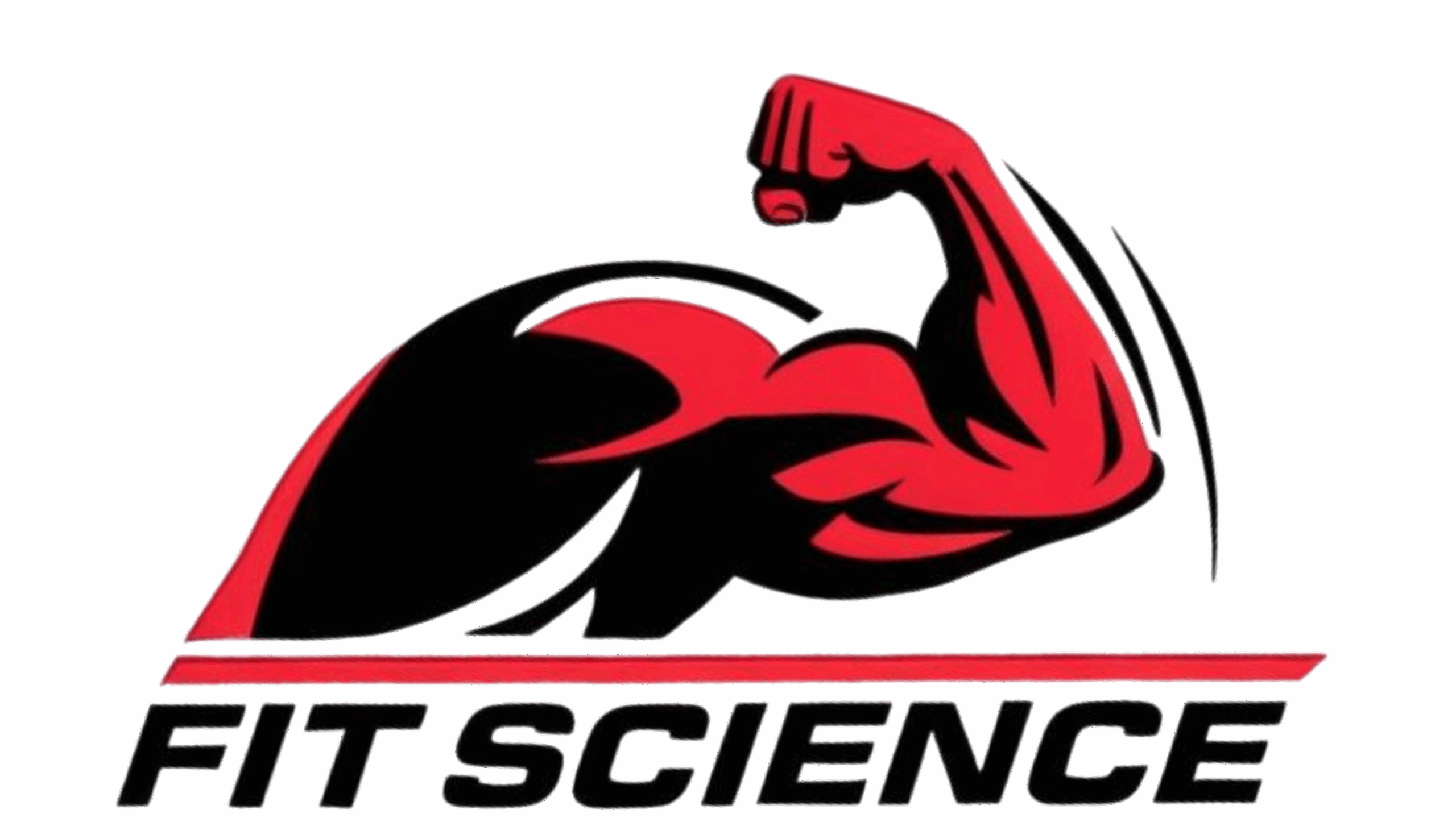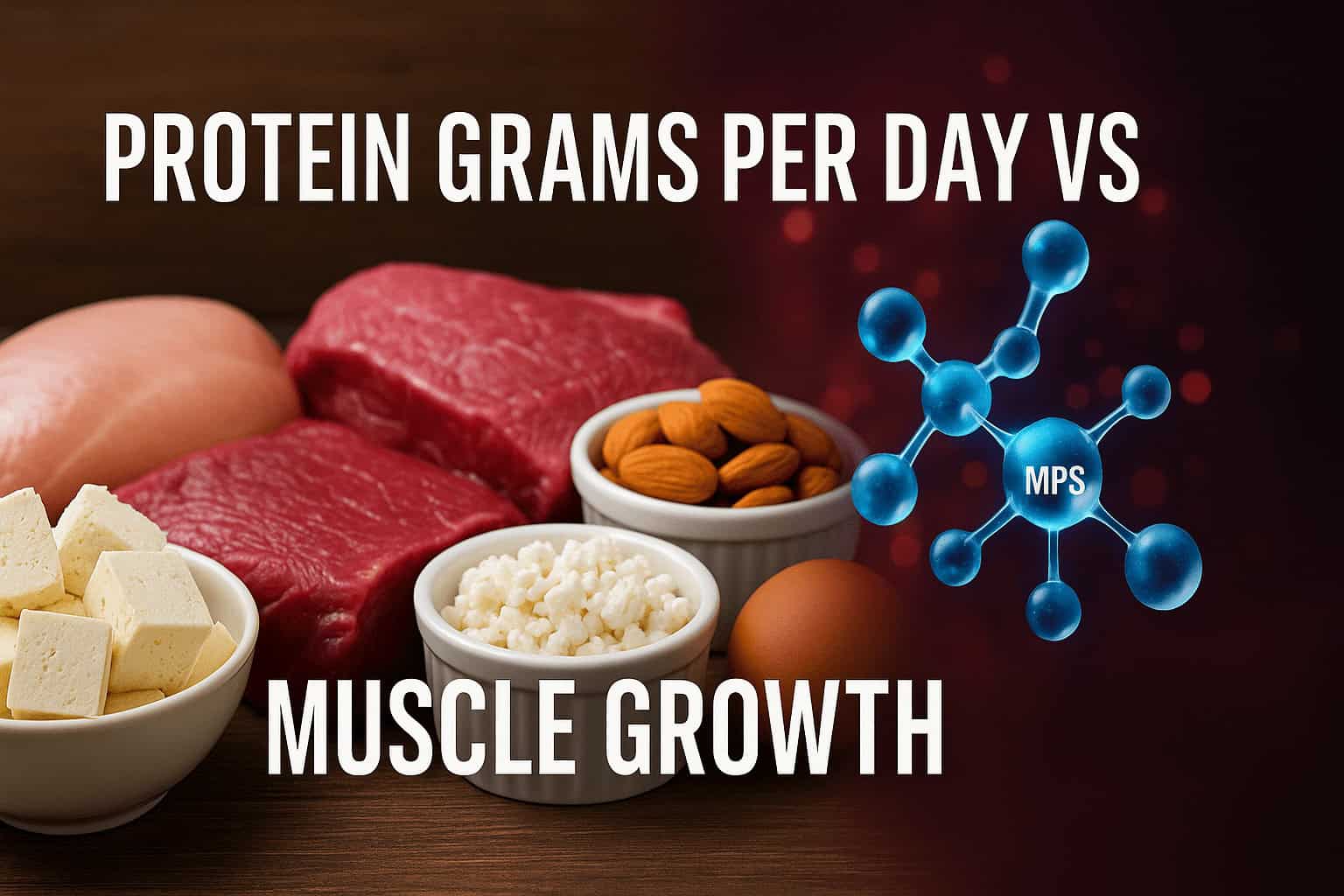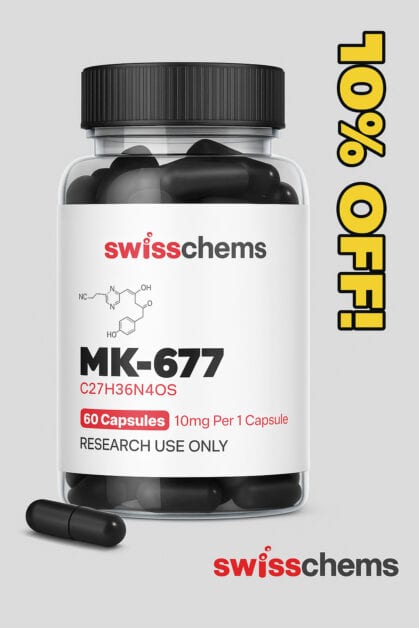Protein Grams Per Day vs Muscle Growth: What It Really Takes to Build and Keep Muscle
Ask ten serious lifters how much protein you need to build muscle and you’ll get ten versions of “at least a gram per pound.” But what does the science actually say? And how does that translate for a lifter trying to grow—or hold onto—muscle mass during a cut?
In this guide, we’ll break down how daily protein intake in grams connects to real-world muscle retention and gain. We’ll look at how muscle protein synthesis works, how protein is absorbed and stored, and what happens when you go above or below your needs. We’ll compare natural vs enhanced lifters and draw insights from both clinical research and the bodybuilding trenches. If you’ve ever asked, “Am I eating enough protein for my goals?”—this is your answer.
🧬 How Muscle Protein Synthesis Works
At the most basic level, muscles grow when muscle protein synthesis (MPS) exceeds muscle protein breakdown (MPB). You lift to damage muscle fibers. Your body uses amino acids from dietary protein to repair and rebuild them stronger. Every protein-rich meal you eat sends amino acids into your bloodstream. One amino acid in particular—leucine—acts like a switch, triggering MPS through the mTOR signaling pathway.
Here’s the key: that MPS response spikes after eating, but then fades. Your body doesn’t stay in muscle-building mode all day, which is why spacing your protein across multiple meals matters. And there’s a threshold—about 20–40 grams of quality protein per meal is enough to maximize that spike for most people. More than that in one sitting? You might not use it all for muscle building.
Strength training boosts your sensitivity to protein, making every meal more anabolic for 24–48 hours post-workout. That’s the “window” everyone talks about—and why consistent training plus strategic protein timing is critical.
🔄 How Protein Is Absorbed, Distributed, and Used
When you eat protein—whether it’s a steak, eggs, or a shake—it gets broken down into amino acids during digestion. These amino acids are absorbed in your small intestine and sent to the liver. From there, some are used for vital functions like enzymes, hormones, and neurotransmitters. The rest go into circulation and become available for muscle tissue to use.
Here’s what happens next:
-
Your muscles pull in those amino acids through transporters.
-
If there’s a trigger (like a workout or leucine spike), your body ramps up MPS.
-
If there’s no trigger, excess amino acids get burned for energy or converted into glucose or fat.
Unlike fat and carbs, your body doesn’t store protein. There’s no “protein tank.” You either use it—or you lose it.
That’s why daily intake—and how you spread it out—is so important. Hitting your total grams matters, but so does hitting at least 3–5 solid protein feedings per day.
💥 What Happens to Excess Protein?
If you eat more protein than your body can use for MPS and vital functions, it doesn’t get stored as muscle. Instead:
-
The nitrogen is stripped off and excreted as urea through the kidneys.
-
The remaining carbon skeletons can be used for energy (burned like carbs) or, in rare cases, converted into fat.
This process—called deamination—is energy-intensive. That’s part of why high-protein diets slightly increase your metabolism: protein has a higher thermic effect than carbs or fat. You’re literally burning more calories just to process it.
So while eating more protein than needed doesn’t build extra muscle, it also won’t turn you into the Michelin Man. The extra gets used or wasted, not stored—unless you’re eating a massive calorie surplus.
🔄 Protein Turnover: Muscle Is Never Static
Even if you don’t hit the gym today, your body is constantly breaking down and rebuilding muscle tissue. This is called protein turnover. You replace grams of muscle protein every day, and if your intake is too low, your body will pull from your muscle stores.
-
The average adult turns over 200–300g of body protein daily.
-
Muscle turnover is slower than liver or gut tissue, but it’s still happening—especially if you’re training hard.
To grow muscle, you don’t need to “flip the switch” once—you need to keep the system tilted toward net synthesis, day after day. That’s why daily intake is everything. It’s not about what you ate after leg day last week—it’s what you’ve done every day since.
⚖️ Natural vs Enhanced Lifters: Who Needs More?
This is where things get interesting. For natural lifters, you’re limited by your body’s own hormonal environment. MPS spikes in response to food and training, but it’s temporary. Once your blood amino acid levels drop, you go back to baseline.
For enhanced lifters (those using anabolic steroids, SARMs, GH, or peptides), that anabolic environment stays elevated for longer. That means they can:
-
Maintain a higher rate of MPS
-
Retain more muscle during a deficit
-
Build more lean mass with the same training stimulus
So, yes—enhanced lifters can usually benefit from higher total protein intakes, especially during growth phases. Their bigger muscle mass and faster turnover demand more raw materials. It’s not uncommon to see enhanced athletes pushing 1.2–1.5 grams of protein per pound of bodyweight.
That said, the mechanism is the same. Muscles don’t care where the signal comes from—they just need the materials when it’s time to build.
📊 Daily Protein Intake Recommendations
Let’s get specific. Here’s how much protein you need depending on your status and goal.
Minimums:
-
0.8 g/kg (0.36 g/lb) = the bare minimum to prevent deficiency. This is the RDA. It won’t cut it for lifters.
-
1.2–1.6 g/kg (0.54–0.73 g/lb) = the low end for maintaining muscle in active individuals. Okay for sedentary people or maintenance phases.
Optimal for Muscle Gain (Natural Lifters):
-
1.6–2.2 g/kg (0.73–1.0 g/lb) = supports maximal muscle growth with resistance training.
-
Gains tend to plateau beyond 2.2 g/kg, but may offer insurance during a cut.
Cutting Phases:
-
2.2–2.7 g/kg (1.0–1.2 g/lb) = helps retain lean mass during calorie deficits.
-
Higher protein offsets catabolic stress and improves satiety.
Enhanced Lifters:
-
2.5–3.3 g/kg (1.1–1.5 g/lb) = often used in aggressive off-season bulks or high-volume training blocks.
-
Some bodybuilders push as high as 4.0 g/kg (1.8 g/lb), but returns diminish beyond that.
Here’s a simplified table for quick reference:
| Lifter Type | Goal | Daily Protein Target |
|---|---|---|
| Natural | Maintenance | 1.6–2.0 g/kg (0.73–0.9 g/lb) |
| Natural | Bulking | 1.8–2.2 g/kg (0.82–1.0 g/lb) |
| Natural | Cutting | 2.2–2.5 g/kg (1.0–1.1 g/lb) |
| Enhanced | Bulking | 2.5–3.3 g/kg (1.1–1.5 g/lb) |
| Enhanced | Cutting | 3.0+ g/kg (1.3+ g/lb) |
🧠 Real-World Anecdotes and Experience
Let’s step out of the lab and into the gym.
Mike, a 200 lb natural lifter, spent years eating 150g of protein a day and hitting the wall on strength and size. He bumped up to 220g—roughly 1.1 g/lb—and within six weeks saw steady growth and zero fat gain.
John, his training partner (on TRT and peptides), eats 280–300g daily at 220 lb bodyweight—about 1.36 g/lb. He claims when he dips below 250g, he flattens out during a cut and starts bleeding size.
Both guys train hard, sleep 7+ hours a night, and control carbs. The variable? Protein.
Forum after forum, lifters echo the same story: “1 gram per pound works, but I feel better and recover faster when I eat more.”
📌 Timing and Distribution: It’s Not Just the Total
While hitting your daily total is key, how you divide it matters too. Muscle protein synthesis peaks after each meal, then falls. If you eat all your protein in one or two big meals, you miss out on extra “anabolic windows.”
-
Aim for 3–5 meals/day with 20–40g of protein each
-
Pre- and post-workout meals should be prioritized
-
A slow-digesting protein before bed (like casein) can help reduce overnight catabolism
Spread your protein intake out like you’re drip-feeding your muscles all day—and you’ll stay more anabolic for longer.
⚠️ What Happens If You Don’t Eat Enough?
-
You lose muscle—even if you’re training.
-
You recover slower, feel flat, and struggle to hold strength.
-
If you’re cutting, you’ll lose lean mass before fat.
And if you’re enhanced? The risk is lower—but not zero. Even with steroids, if your protein intake is trash, your results will suffer. You can’t build a house without bricks—even if you’re on growth hormone.
🔚 Final Takeaways
-
Protein is the raw material your muscles use to repair and grow.
-
You don’t store protein like fat or carbs—you either use it or burn it.
-
Most serious lifters should aim for 1.0–1.2 g of protein per pound of bodyweight daily. Enhanced lifters often benefit from more.
-
Spread your protein across 3–5 meals for consistent muscle protein synthesis.
-
During a cut, protein becomes even more important—more than any other macro.
Bottom line: if muscle is your goal, protein is non-negotiable. Whether you’re natty or enhanced, get your grams in—and get them in right.
📚 References
-
Nunes EA et al. J Cachexia Sarcopenia Muscle. 2022;13(2):795–810.
-
Shinohara Y et al. Nutrients. 2019;11(11):2759.
-
StatPearls. Physiology of Nutrient Absorption. NCBI Bookshelf, 2022.
-
Bender DA. British Journal of Nutrition. 2012;108 Suppl. 2:S113–121.
-
Poortmans JR & Carpentier A. Brazilian Journal of Medical and Biological Research. 2012;45(10):875–890.
-
Kadi F et al. Medicine & Science in Sports & Exercise. 1999;31(11):1528–1534.
-
Michelsen CB et al. Journal of Trauma. 1982;22(5):410–413.
-
Helms ER et al. Nutrients. 2020;12(11):3622.
-
West DW et al. Journal of Nutrition. 2019;149(4):631–639.











